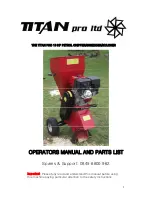
62
When water is heated at the atmospheric pressure, it boils and generates steam at 100
℃
. That
is, the heating energy is consumed in order to raise water temperature (sensible heat) and to
generate steam from water (evaporating latent heat) (Fig. 1).
1.2.2 Explanation on refrigerating cycle
As mentioned above, the lower the pressure, water evaporates at the lower temperature. For
absorption chiller, water is evaporated in vacuum vessel (evaporator). Water boils or evaporates at
around 4 to 6
℃
in such high vacuum as absolute pressure 6 ~7 mmHg. The heat source is
chilled water with 12
℃
(Fig.2). The chilled water runs into the heat exchanger tubes in the
evaporator and evaporates the water in the evaporator with heating. The temperature of the chilled
water running out of the evaporator is lowered only by evaporated latent heat which transfers to
the water (refrigerant). Usually, chilled water outlet temperature is controlled at 7
℃
and then it is
warmed by the air-conditioning load and again enter the evaporator.
In order to keep evaporating, the refrigerant vapor must be discharged from the evaporator and
refrigerant (water) must be supplied.
The refrigerant vapor can be discharged from the chiller-heater by vacuum pump, but such a way
is not good because the volume becomes so big. In the absorption chiller, the refrigerant vapor is
absorbed into lithium bromide solution. As the vapor’s partial pressure of lithium bromide solution
is lower than the water’s saturated vapor pressure, hygroscopic lithium bromide solution is
convenient to absorb the refrigerant vapor.
The name, “absorption chiller” comes from the
phenomenon that lithium bromide solution absorbs the refrigerant vapor.
When the refrigerant vapor is absorbed into the lithium bromide solution, the condensing latent
heat, which generates when gas (steam) changes into liquid (water), and dilute heat, which
generates when the solution is diluted by absorbing water content, generate. The heat is removed
by cooling water running through the heat exchanger tubes in the absorber as shown in Fig. 3.
Thus, the refrigerant vapor generated in the evaporator is discharged. As lithium bromide solution
is diluted, the effect to absorb the refrigerant vapor reduces, then concentrated solution must be
supplied as shown in Fig. 3. Since lithium bromide solution is very expensive, the solution-
concentrating system is provided with the absorption chiller to use the solution by circulation. The
heat exchanger which performs such function is called generator.
The diluted solution sent into the generator is heated by the heating media such as steam, hot
Summary of Contents for HDFN-80-1400
Page 11: ...11 Fig 1 1 External View of Chiller heater...
Page 16: ...16...
Page 20: ...20 Fig 3 5 Operation Flow Chart...
Page 21: ...21...
Page 35: ...35...
Page 66: ...66 Fig 8 Lithium Bromide Temperature Specific Gravity Concentration Curve...
Page 67: ...67...








































